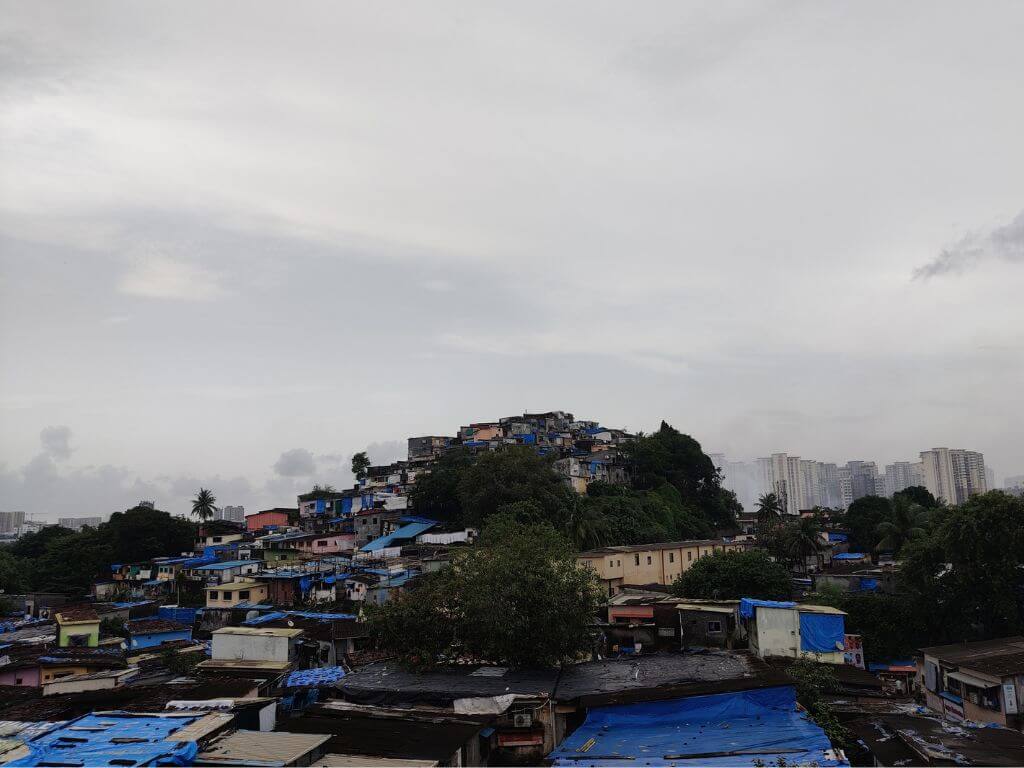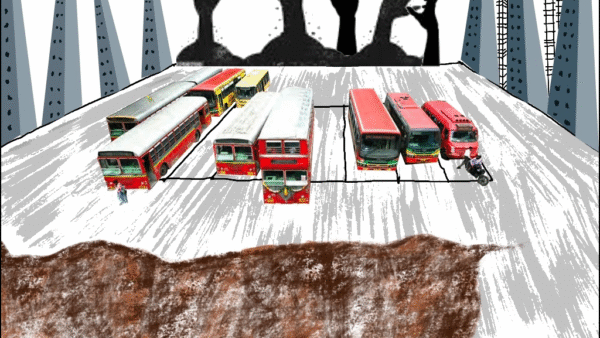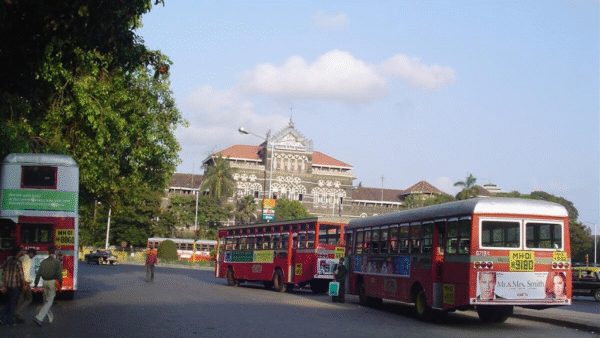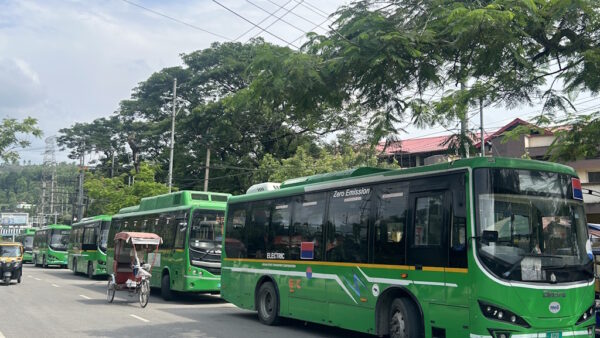Before the inception of the Slum Rehabilitation Authority (SRA), there had been attempts to improve the lives of people living in informal settlements. The efforts started off with carrying out some improvements because, besides being eyesores, slums also had a huge deficiency in infrastructure, especially physical infrastructure such as water supply, sewage, sanitation pathways, and so on. The approach initially was to acknowledge that these may be encroachments but there are ways to better their lives rather than throw everyone out. It led to some basic slum improvement works which were fully subsidised by the state, but it only marginally improved the level of infrastructure in these settlements.
In the mid-1980s, the concept gained ground that slum dwellers needed to be involved too and should be given security of tenure in the form of land tenurial rights so they could form cooperatives, in addition to better infrastructure. This was called the Slum Upgradation Programme (SUP). The upgradation was marginally better than slum improvement but there were space constraints which meant a lot of infrastructure work could not be done in a dense settlement.
Even in forming cooperative societies and giving tenure of the land, there were huge problems. Firstly, the people themselves were not enthusiastic in getting land tenure because, by then, they had been given photo-passes which ensured that they would not be thrown out unless they were given alternative accommodation. Secondly, the land tenure could be given to them only if the land they were occupying conformed to the Development Plan (DP) regulations, which meant they were not occupying a reservation like green space. In most cases, the settlements had come up on non-conforming lands, and that’s why they were ‘encroachments’. Therefore, the plan became a non-starter and not many plots could be given on long-term tenure to the cooperative societies that people had formed.
The social stigma
Slum dwellers expressed that the major problem they faced was the social stigma which came from their settlements and the fact was that their social standing was poor because they lived in shanties. The way the settlements or shanties looked meant some called them eyesores but it was not a misnomer. Though people living in them worked hard over the years to improve their homes and make them pucca structures, these were still shanties.
Some of them asked why they could not aspire to live in apartments which then brought in the concept of slum redevelopment. I was director of the Prime Minister’s Grant Project (PMGP), under the aegis of which we had a few cooperative societies emerge with people who felt that if they were able to come together and build a ground-plus-four floor structure, they would save some space on the ground which could be used for common community purposes and they would have a pucca building too.
At that time, it was not a totally populist approach where houses would be given free. Nothing is really free. Whenever people are given anything free, it has to be cross-subsidised. Then, people said they would pay money in two installments, especially if they could access institutional finance. So, we worked it out in that manner. The cost of constructing a 180 square feet tenement in the 1980s was about Rs 37,000; it could work. However, the process was slow because there were always problems in the slum settlement of who was eligible and who was not. This was a dynamic process because it was not that everyone was staying there for years, people had moved out, and new structures had come in. All sorts of things happened.

Photo: Creative Commons
SRA scheme was never to be
Then came the concept that people in slum settlements would be given free houses. That was the electoral promise made at that time and one that the Shiv Sena-led government walked into. But it was also propelled by Mumbai’s developers not finding enough land in the city for construction. So, why not eye this land?
Developers clearly saw enormous potential in slum land across the city. They could further marginalise slum people into smaller spaces and then carve larger spaces out of the slum land to construct five-star hotels and homes. This happened in so many cases, including starred hotels in Worli and Parel which were built on slum land. In fact, the famous Twin Towers in Tardeo also was built on slum land; many such buildings came up. It was usually profitable for the builders and politicians to redevelop slums this way.
The basic idea then was that it was a brilliant scheme, a panacea, and the city could get rid of all the slums. The thinking was that in ten years from 1997-98, all the slums with nearly eight lakh households at that time could be rehoused this way. It is close to 30 years now and we do not see that it has happened. In fact, it was never to be because developers would actually control the pace at which they would release the free sale tenements in the market. Otherwise, the market would crash.
So, the government created a so-called planning authority – Slum Rehabilitation Authority – carving it from the Brihanmumbai Municipal Corporation which was the planning authority for the city. For the 8 percent land in Mumbai which was under slum settlements, there was a different planning authority which did everything except plan how to fairly rehabilitate people.
In all these years, I do not think that the SRA has been doing any justice to the concept of planning for slum settlement people and land. Planning would have simply meant thinking and arranging how, in what manner, it would preserve the 8 percent land on which slums stood so that the space and people are not further marginalised. But the problem was that once the government brought in the Frankenstein of a populist free scheme, no one was willing to touch it with a barge pole, every politician felt why should he/she talk about it.
What has happened over the years is that the 180 square feet free tenement has gone up to being 300 square feet one, which is needed, but everything that’s free has to come from somewhere. This has come from the extra Floor Space Index (FSI) given to developers which further densified the area.
The alternatives
The way ahead would be to look at the densification that this brought in and address that. If we say that the slum settlements have about half the city’s population and they are occupying say 6 or 8 percent of the city’s land, then it gives us a basic density in those settlements. The question to ask is: To what extent can we further densify them in a sustainable manner. If further densification is not sustainable, then we cannot allow the free-ship to continue. The people will have to be told that this is the trade-off; they can retain the land, work out ways to invest some money, maybe through financial institutions, so that the densification on slum land is minimal. Providing houses to slum people for free is unsustainable and, therefore, I think it requires rethinking at this stage.
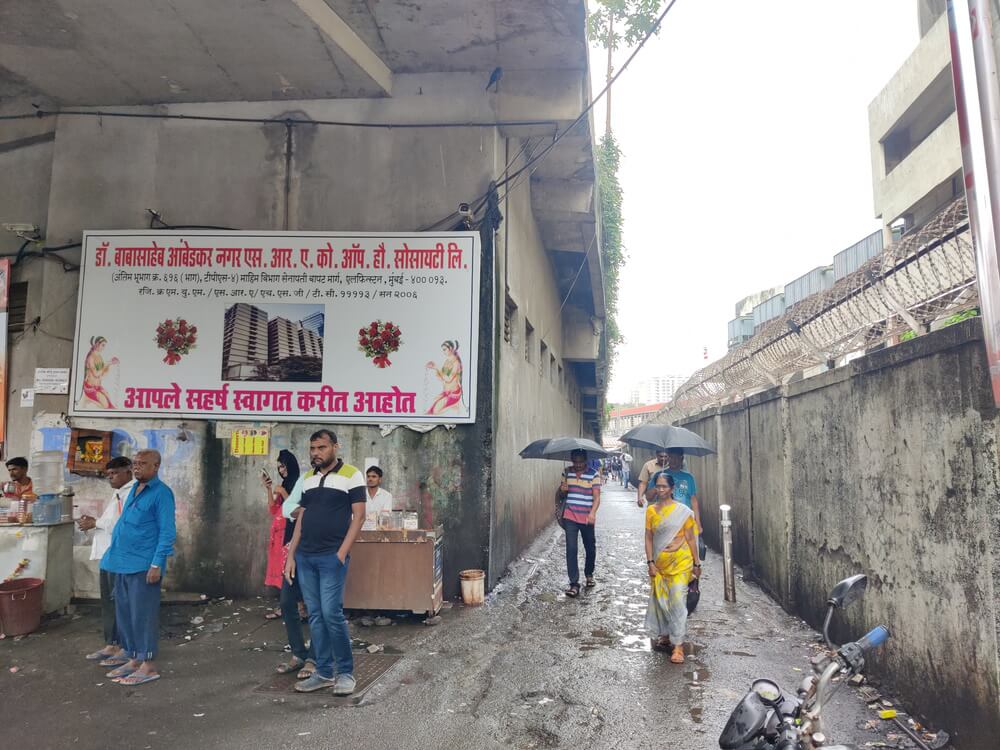
Photo: Jashvitha Dhagey
Not piecemeal development
In order to take slum redevelopment forward, it cannot be decided in a piecemeal manner where a developer decides whether it will be taken up, what the size of the settlement will be, whether he will claim consent of 50 or 70 percent of the people there, come to the Authority and say ‘I have the consent, so I shall develop it’. Who are the developers to decide this?
The decisions have all got to be by the planning authority or the SRA; it should lay down what the minimal portion of land should be for development of the settlement itself. If we go back to the point that a slum is really deficient in infrastructure, then bringing the infrastructure there to an acceptable level or that which the city requires should help decide how much land can be developed.
What is the minimum size of the land on which planning should be done? This is the job of the planning authority; it should, or should have, actually planned for all the 8 percent of city’s land which have slums, then the implementation could take place in subsets of that plan. It is not necessary that the planning block and the implementation block should be the same, but it is necessary that the implementation block has to be a subset of the larger planning block. This did not happen, is not happening.
The SRA gives social status to people who otherwise feel left out of the city’s fabric, it actually bridges the divide between the so-called legal city and illegal city, but then it cannot be sustained with the level of densification and the level of populism we have seen.
Most of the benefits from the SRA scheme have been obviously reaped by developers. They came in saying ‘I will put in my money’ because the slum had to be redeveloped and its deficiencies addressed, but they were not doing charity. All those who put in initial money walked away with huge profits, there were also middlemen who secured the consent of slum dwellers and started trading that consent with developers. So, many people including developers and middlemen have profited off the SRA scheme. Of course, politicians and the bureaucracy have benefitted; some slum dwellers would have benefitted too. As for the SRA tenements that were built, maybe 10 percent are in good condition while 90 percent are in such a horrible condition that people are worse off than what they were in slums.
When developers realised that houses had to be given free and about 50 percent of the land would have tenements for commercial sale, the marginalisation of slum dwellers was already to the extent of 50 percent on the land. But greed took over and slum dwellers were pushed into smaller pieces of land with a ground-plus-21 floor structure on the grounds that they would be happy to get the breeze on the top floors, but how would they live there if the lifts did not work. Then, the marginalisation was such that only 25 percent of the slum land went to slum dwellers and 75 percent was for sale.
As architect PK Das says, all slum lands should have been declared as land meant only for affordable housing, but then the question that arises is how would it sustain a free scheme. Which developer will create free houses and also build affordable houses which he will be able to sell at low rates?
Therefore, I believe that the city has to come out of this populism and the SRA should do its job as a planning authority to make a master plan of how the 8 percent of the city’s land, or whatever amount of land is now occupied by slums, should look like in maybe 10 or 20 years, and then have developers implement it.
Gautam Chatterjee was the Founder Chairperson of Maharashtra Real Estate Regulatory Authority (Maha RERA) till 2021. Before his retirement as an IAS officer, Chatterjee served in various institutions of Government of Maharashtra in the housing and urban sectors like Prime Minister’s Grant Project, Slum Rehabilitation Authority, Brihanmumbai Municipal Corporation, and MHADA, for several years. He was also Housing Secretary, Government of Maharashtra.
(As told to Jashvitha Dhagey)

